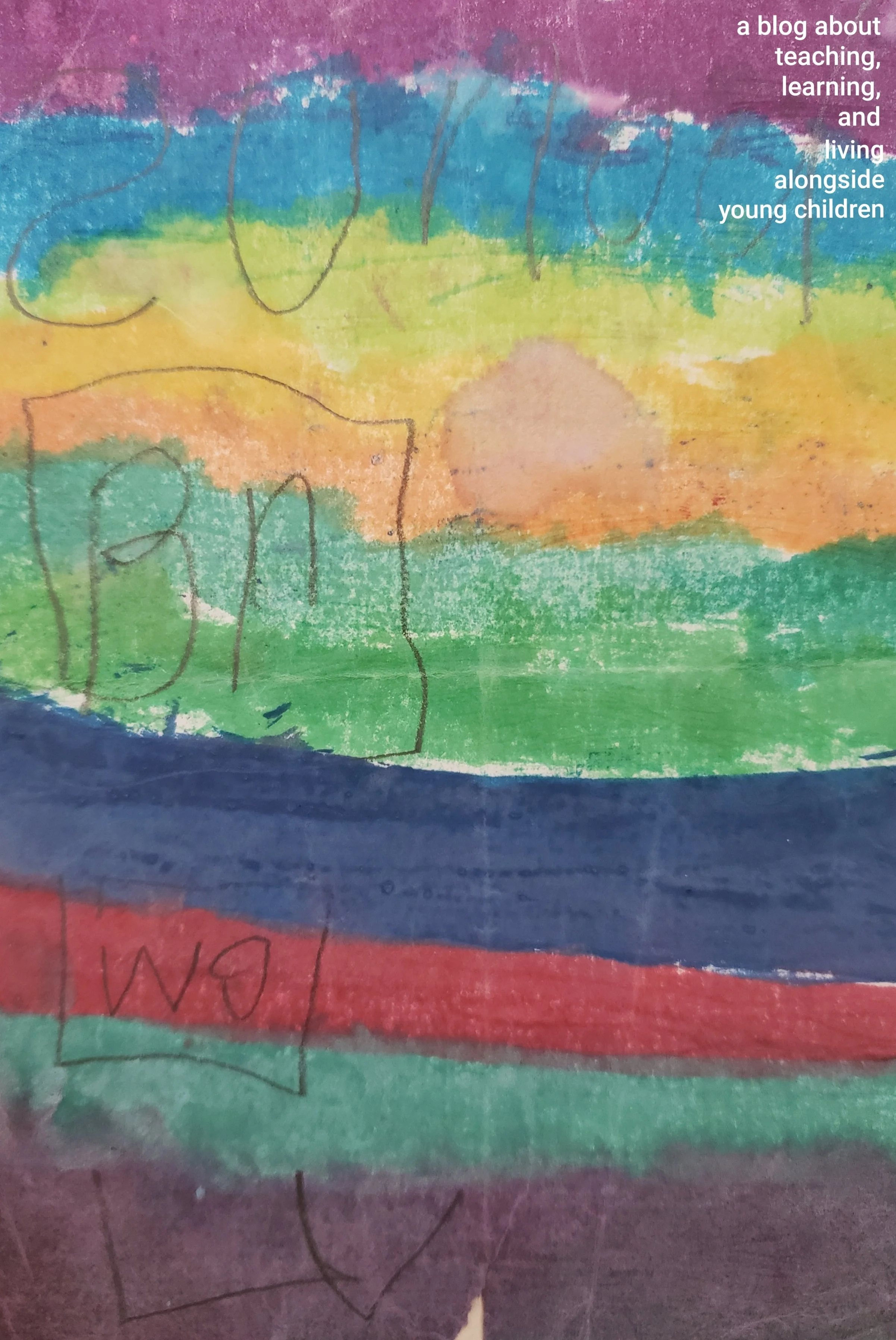Gender Bias in Early Childhood, Part 2: Learning to Deconstruct Bias
/Illustration by Leia O., Age 6.
Last week on NML, we raised the issue of the small and subtle ways that gender bias creeps into our interactions with young children. From overt yet innocuous comments about “how boys/girls are” to the ways we unconsciously come to expect different behaviors from children based on their assigned sex, how we as adults think about and act on gender matters.
So why do we, as well-meaning professionals and deeply caring families hold onto these biases?
Gender is something we all participate in. Even when it’s performed in different ways, we constantly view ourselves and others through the lens of what’s masculinized and feminized. How do we fix our hair or fit our jeans? Which bathroom do we use in public spaces? These are decisions we come to based on collected experience that tells us how we can/should/wish to move through the world. So, too, do our experiences of gender identity show up in our interactions with children. And that’s okay. The key is to be aware of what gender is - a kind of presentation about ourselves that we can have agency, choice, over - and then likewise apply that awareness of humanity’s universal fluidity to the children we care for. Every person’s experience (of gender, the color blue, cilantro, O’Keefe paintings, enjoyment of Crossfit) is unique because it is impacted by all the other experiences and feelings they’ve had. We are universally unique, and children deserve the right to discover and enjoy their particularities.
But removing our biases from our view of children is hard work. It takes constant self-inventory of our words, habits, and the patterns we perpetuate. Beyond the deep social history of gender bias, there’s another factor at play both in how we understand children and in how children understand the world: our brains love patterns - can’t get enough of patterns! Most of the time, this is great. Pattern recognition helps satisfy our biological fear of the unknown and allows us to make educated guesses and reasoned responses to situations that arise in our lives. Young children learn to pick up on patterns from birth, and this skill becomes more sophisticated over time (I drop the food, you pick it up…I tell you I hate you, you get mad and spend an extra ten minutes with me). Likewise, children learn to categorize and classify the things around them based on the patterns they’ve picked up: you versus me, car versus truck, water versus juice. Sometimes, these associations are socially erroneous, as a three-year-old once told me upon my return to school from Starbucks, “You can’t drink coffee! Only grown-ups drink coffee!” However, this was an important indicator of how children’s thinking gains complexity from experience. Children have innate connection-making skills, but they are not experienced enough to implicitly understand the nuances of the social world.
There are so many ways that people look, behave, feel, and live. For children under the age of about six, this plurality rubs up against their developmental tendency toward binary thinking (good guy/bad guy, best friend/not my friend, invited/not invited to my birthday, princess/prince, boy/girl, etc.). Our job is to help support their understanding of things being in-between, unfixed, grey - and learn how to get curious about that cognitive, often emotionally stirring disequilibrium. Essentially, we want children to learn how to open up rather than shut out what we don’t know about yet. But we adults have to get there first. Those preschool binaries are classic, but we don’t always contextualize them as a part of their brain learning to categorize. Adults, too, are liable to make perceptual mistakes because our brains like to find patterns, even when they are unfounded. So, what we often do is reinforce or “correct” them based on our own experiences of those categories, especially in the case of gender, which is such a marked and marketed division in our society. See? They just love princesses, I don’t know why. Girls are just different. It’s easy to fall back on these larger narratives, but, as we discussed in part one, it’s not what children need. Just as it behooves us to realize the world isn’t split into good people and death eaters, making conscious space for a diversity of genders helps us become more understanding, thoughtful participants in our communities.
So, how do we embark upon this hard work in reality? Piece by piece, conversation by conversation. If our aim is for children to grow up with strong self-identity and an ability to navigate a complex world, then we must invite them in to think about these issues with us. One antidote to the hard gender lines we grew up with is to take a “yes, and…” approach when issues of gender arise. Yes, some girls wear dresses. And so do some boys, and so do some other people. The more generous and open we are in relation to the experiences of others, the more generous and open our children will likewise learn to be. And I don’t know about you, but revealing our generosity of spirit would make a way better party theme than revealing someone’s gender.


